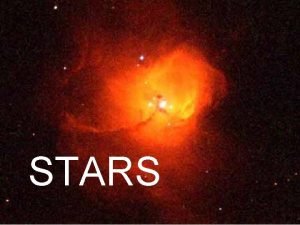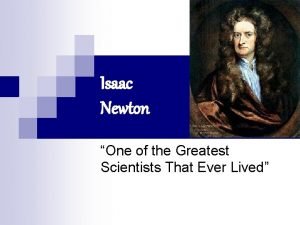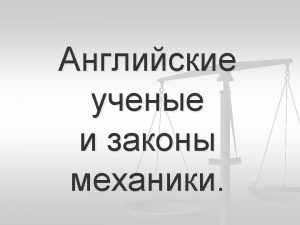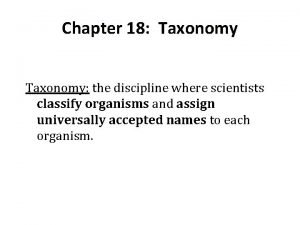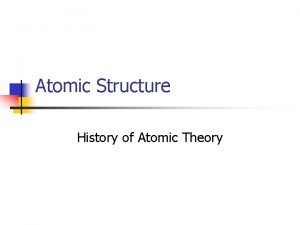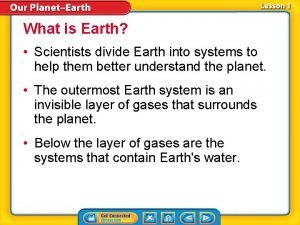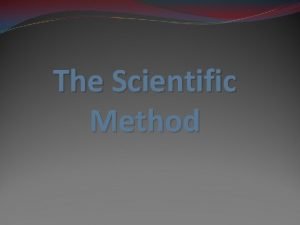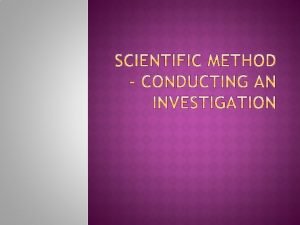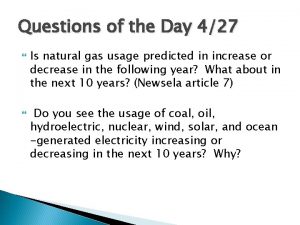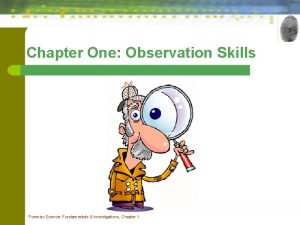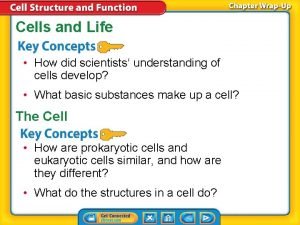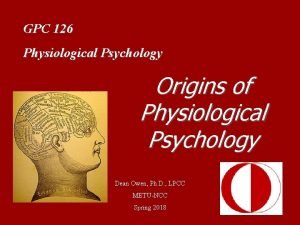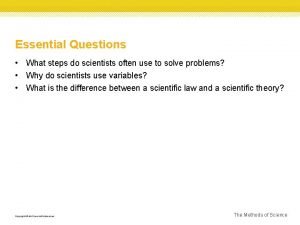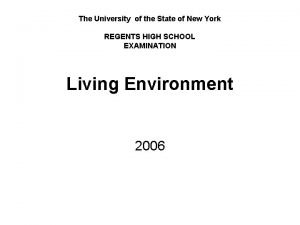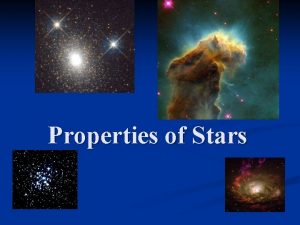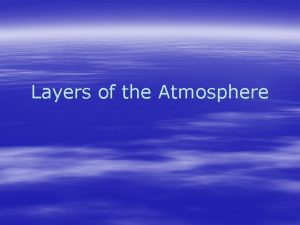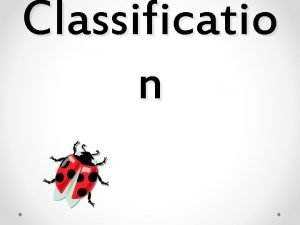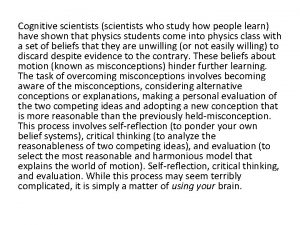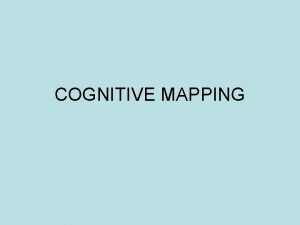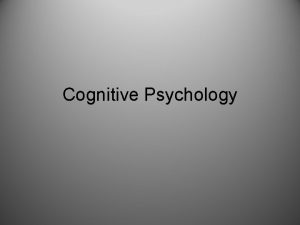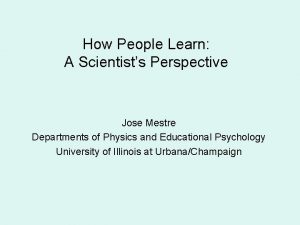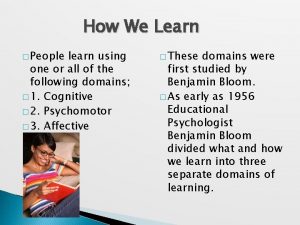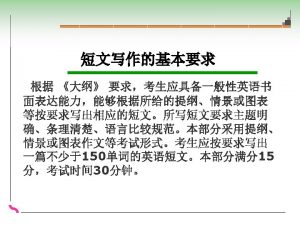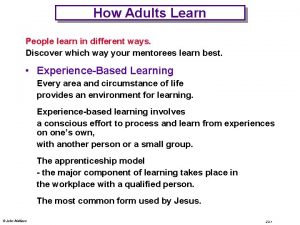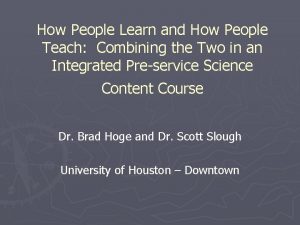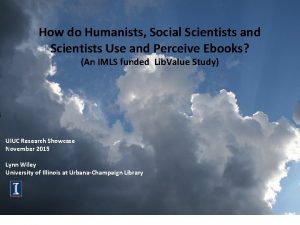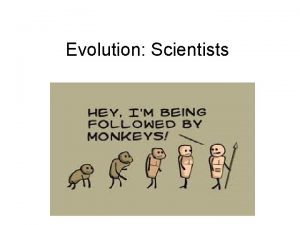Cognitive scientists scientists who study how people learn
























































- Slides: 56

Cognitive scientists (scientists who study how people learn) have shown that physics students come into physics class with a set of beliefs that they are unwilling (or not easily willing) to discard despite evidence to the contrary. These beliefs about motion (known as misconceptions) hinder further learning. The task of overcoming misconceptions involves becoming aware of the misconceptions, considering alternative conceptions or explanations, making a personal evaluation of the two competing ideas and adopting a new conception that is more reasonable than the previously held-misconception. This process involves self-reflection (to ponder your own belief systems), critical thinking (to analyze the reasonableness of two competing ideas), and evaluation (to select the most reasonable and harmonious model that explains the world of motion). Self-reflection, critical thinking, and evaluation. While this process may seem terribly complicated, it is simply a matter of using your brain.

Newton’s Laws FORCE AND MOTION acceleration

What do you think? • An object’s ____ is most closely linked to the size of the net (vector sum) force acting on an object. a) position c) velocity • • b) displacement d) acceleration An object will move at a constant velocity if: a) a constant net force acts b) no net force acts To make an object move to the right and speed up the same amount each second requires a net force that is…

What do you think? Imagine a place in the cosmos far from all gravitational and frictional influences. Imagine that you visit that place and throw a rock. The rock will: a. gradually stop. b. continue in motion in the same direction at constant speed. c. This prediction cannot be made

What do you think? Supposing you were in space in a weightless environment, would it require a force to set an object in motion?

Newton’s 1 st Law • An object at rest will remain at rest, and an object in motion will remain in motion at a _ _ _ _ unless it is acted upon by a _ _ _ force. • If … then…

Newton’s 1 st Law • An object at rest will remain at rest, and an object in motion will remain in motion at a CONSTANT VELOCITY unless it is acted upon by a NET (external) force. If SF = 0 If SF ≠ 0 then a=0 then a≠ 0 (acceleration occurs)

Newton’s 1 st Law CYU • Cars had no seatbelts in the 1950’s. Then, if a car ran into a rigid obstruction (like a tree) the passengers…. A) were thrown forward. B) continued forward. C) were thrown backward.

Newton’s 1 st Law CYU • In a head on collision, the job of the seatbelt is to… A) balance the forces on the passenger. B) exert an unbalanced force on the passenger, toward the back of the car. C) exert an unbalanced force on the passenger toward the front of the car.

The job of a head rest: A head “rest” does its job when a car is struck from behind. In this type of accident, the headrest must: a) Balance the forces on the person’s head to… b) Exert a net force on the person’s head toward the front of the car to… c) Exert a net force on the person’s head toward the rear of the car to…

So, a (net) force is the cause of…

So, a (net) force is the cause of… ACCELERATION

Time to ask…

What is the mathematical relationship between… ________( ) and ______( )?

What is the mathematical relationship between an object’s acceleration (m/s/s ) and the net force (N) acting on it? (Assume _ _ is kept constant. )

What is the mathematical relationship between an object’s acceleration (m/s/s ) and the net force (N) acting on it? (Assume MASS is kept constant. )

Newton’s 1 st Law, also called The Law of…

Newton’s 1 st Law, also called The Law of… INERTIA

Inertia! What is it? Can it be measured? Does it have units?

The numerical measure of inertia is…

The numerical measure of inertia is: MASS

Mass is NOT: • • weight a force a vector volume

The Inertial Balance • What does it measure? • Where can it be used?

So, mass… …is the measure of___________ Doesn’t that mean mass affects acceleration? Can you ask: What is the mathematical relationship between _____________ (_____) and mass (kg) of an object?

What is the mathematical relationship between an object’s acceleration (m/s/s ) and its total mass (kg)? (Assuming the is kept constant. )

What is the mathematical relationship between an object’s acceleration (m/s/s ) and its total mass (kg)? (Assuming the net force is kept constant. )

Now you (should) understand how Net Force and Mass affect Acceleration Net force is the cause of acceleration. The resulting acceleration is in the direction of the net force. A greater net force causes a greater acceleration. In fact, twice the net force causes twice the acceleration, as long as the _____ is kept constant. Mass is the measure of the “resistance” to acceleration. A more massive object will accelerate less quickly from a net force than a less massive object. In fact, an object that is twice as massive will accelerate half as quickly given the same _________. a = SF/m (Newton’s 2 nd Law!)

Newton’s 2 nd Law • Relates net force, mass, acceleration • acceleration = net force / mass • a= SF/m a=Fnet/m SF=ma • NOTE: This law focuses on the net force on ONE object and the resulting acceleration of that ONE object.

Ex: Basic Applications of Newton’s 2 nd Law • A Tesla S has a mass of 2107 kg. What net force is required to accelerate this car to 100 km/hr in 2. 36 seconds? • Dennis (67 kg) can start from rest and sprint 10. 0 m in 2. 58 seconds. How much (average) net force does this require? • A major league pitch can impact the catcher’s glove. The ball is stopped after moving 20. 0 cm. If the 142 g ball is acted upon by a net force of 7000 N (from the glove) acting on it during the collision. , how fast was it moving? (Assume the ball slows with a uniform acceleration. )

What is net force?

A Net Force is… The VECTOR SUM of ALL of the forces acting on an object.

What is a Force? • • Symbol? SI unit? Definition? Examples? (types of individual forces)

Types of Forces Type (Fg) Gravitational force (Fn) Normal force (Ff) Friction (force) (Fa) Applied force (Ft) Tension (force) (Fd) Drag (force) (Fthrust) Thrust (Flift) Lift (force) “Agent”

Types of Forces • Which force is always present for earth-bound objects? • Upon what does it depend?

What is the mathematical relationship between…….

What is the mathematical relationship between……. an object’s weight in newtons (or the force of gravity on it) and its mass in kilograms? This is the question we’d like to answer, but…

What is the mathematical relationship between…. the magnitude of the force needed to counter the gravitational force (N) on an object and the mass (kg) of the object? This is the actual question we will answer. Why is there a difference?

Weight is defined differently in various texts. • Some say weight is another name for the force of (or due to) gravity. • Some say weight is the force needed to counter the force of gravity to keep an object from accelerating vertically. – How does one force keep an object from accelerating vertically? In other words, what does counter mean?

Weight “The force of gravity is the force with which the earth, moon, or other massively large object attracts another object towards itself. By definition, this is the weight of the object. All objects upon earth experience a force of gravity that is directed "downward" towards the center of the earth. ” the PCR

Weight • We will say that weight is the size of the gravitational force on an object. • Weight is directly proportional to mass. • Fg = mg – Fg = weight, or gravitational force (in newtons) – m = mass (in kilograms) – g = acceleration due to gravity, OR free fall acceleration, on earth 9. 8 m/s/s OR gravitational field strength (9. 8 N/kg) • Weight changes with location in the universe.

Practice • What is the weight (in N) of a 30 kg suitcase? (if it is on earth) • An astronaut weighs 700 N on Earth. How much does he weigh on the moon (where g=1. 6 N/kg)?

Assignment: Honors Physics • Read PCR Newton’s Laws Lessons 1, 2 • Complete Quest: Mass, Weight, Force

Types of Forces (a second look) Type (Fg) Gravitational force (Fn) Normal force (Ff) Friction (force) (Fa) Applied force (Ft) Tension (force) (Fd) Drag (force) (Fthrust) Thrust (Flift) Lift (force) “Agent”

What is net force? The vector sum of all the forces acting on an object – and it is the cause of acceleration.

What is a NET FORCE? • It is NOT a type or example of a force. • It is the VECTOR sum of all the forces (acting on an object). • It is also called the unbalanced force, the sum of the forces, and total force. • Symbols: SF or Fnet (or just F by lazy teachers and authors)

I am still confused, I can’t visualize forces! • Force cannot be seen! • Many forces can be felt, but only by the objects that are interacting. • We construct Free Body Diagrams (FBD) to assist us. 1. Draw a dot or small box to represent the object 2. Draw one arrow representing each of the forces acting on the object. • • Draw the arrow in the direction of the force. Make the arrow longer for a stronger force. 3. Label each arrow with an F and subscript.

Which FBD is for an object that is NOT MOVING? accelerating!?

Free Body Assignment • Teacher does one example • Students complete all 12 on PCR • In notes, copy the problem description, the labeled FBD (be sure it is drawn to scale) FOR EACH PROBLEM YOU DIDN’T GET ON THE FIRST TRY.

Assignment - Read PCR Newton’s Laws Lessons 2 c, d, 3 a, b - Start Quest Newton’s 2 nd and 3 rd Laws

What about the forces between two objects? • Newton’s 1 st Law uses forces to determine if an object _ _ _ • Newton’s 2 nd Law relates the acceleration to the net force and mass MATHEMATICALLY • Newton’s Third Law focuses on the size and directions of the forces that are applied when tow objects interact. It does NOT analyze the movement that results form the forces!


Consider these interactions: • Two things (Thing 1 & Thing 2) of equal mass traveling at equal speeds collide head-on. Who “feels” more force? • Two things (Thing 1 & Thing 2) of equal mass collide, but Thing 2 was initially at rest. Who “feels” more force? • Thing 1 rear-ends Thing 2. Who “feels” more force?

Consider these interactions • Two things (Thing 1 & Thing 3) traveling at equal speeds collide head-on. Thing 3 is WAY more massive. Who “feels” more force? • Two things (Thing 1 & Thing 3) collide, but Thing 1 was initially at rest. Thing 3 is WAY more massive. Who “feels” more force? • Two things (Thing 1 & Thing 3) collide, but Thing 3 was initially at rest. Thing 3 is WAY more massive. Who “feels” more force?

3 rd • The force object one exerts on object two is equal size but opposite direction to the force that object two exerts on object one. ALWAYS • (For every action, there is an equal, but opposite reaction. ) • Newton’s Third Law focuses on the size and directions of the forces that are applied when two objects interact. It does NOT analyze the type of movement that results form the forces!

Action and Reaction Forces… • Are ALWAYS the same size and opposite directions • Are ALWAYS the same type of forces (if the “action” force is friction, so is the “reaction” force) • NEVER cancel (balance is a better word, but they NEVER do that either!)

The heaviest man ever… • The earth pulled on Jon Minnoch with 4332 N of gravitational force. How much gravitational force did Jon exert on the earth?
 Cognitive and non cognitive religious language
Cognitive and non cognitive religious language Kinesthetic learners learn best by
Kinesthetic learners learn best by How people learn
How people learn A researcher decides to study cognitive changes
A researcher decides to study cognitive changes The more you study the more you learn
The more you study the more you learn Peple media
Peple media In the usa the big cia
In the usa the big cia Transformed people transform people
Transformed people transform people Justpeople
Justpeople Marketing: real people, real choices
Marketing: real people, real choices What is case series
What is case series Retrospective cohort study vs prospective cohort study
Retrospective cohort study vs prospective cohort study Work study technique
Work study technique Marty lobdel
Marty lobdel Phytogeographical regions of india
Phytogeographical regions of india Distinguish between time study and motion study
Distinguish between time study and motion study Differentiate between time study and motion study
Differentiate between time study and motion study Scientists recently discovered that rocks collected
Scientists recently discovered that rocks collected How do scientists classify stars
How do scientists classify stars Sometimes scientists make a mistake or
Sometimes scientists make a mistake or Isaac newton is one of the greatest
Isaac newton is one of the greatest Newton one of the greatest scientists
Newton one of the greatest scientists At the periphery of a hurricane the air is ____
At the periphery of a hurricane the air is ____ Famous german scientists
Famous german scientists Famous english scientist
Famous english scientist The scientific discipline of classifying organisms
The scientific discipline of classifying organisms History of the atom scientists
History of the atom scientists Food scientists measure food energy in
Food scientists measure food energy in Rules for significant figures
Rules for significant figures Newton one of the greatest scientists
Newton one of the greatest scientists How scientists work
How scientists work Famous food scientists
Famous food scientists Famous romanian scientists
Famous romanian scientists Where can scientists obtain stem cells? *
Where can scientists obtain stem cells? * Scientists divide the atmosphere into how many layers?
Scientists divide the atmosphere into how many layers? Diagrams tables and graphs are used by scientists mainly to
Diagrams tables and graphs are used by scientists mainly to What important attitudes do scientists possess
What important attitudes do scientists possess Hispanic american scientists
Hispanic american scientists Union of concerned scientists
Union of concerned scientists Scientists think that convection currents flow in earth's *
Scientists think that convection currents flow in earth's * Forensic science chapter 1 observation skills answers
Forensic science chapter 1 observation skills answers How did scientists understanding of cells develop
How did scientists understanding of cells develop History of physiological psychology
History of physiological psychology What steps do scientists often use to solve problems?
What steps do scientists often use to solve problems? Why do biologists classify
Why do biologists classify Scientists discover how develop brains
Scientists discover how develop brains Scientist hypothesize that cabbage broccoli cauliflower
Scientist hypothesize that cabbage broccoli cauliflower Robert hooke plant cell
Robert hooke plant cell I spex
I spex Scientists can from
Scientists can from Human clone
Human clone What are the properties used to classify stars
What are the properties used to classify stars What is the first layer of the atmosphere
What is the first layer of the atmosphere How do scientists classify stars
How do scientists classify stars How do scientists classify organisms
How do scientists classify organisms 8 classification levels
8 classification levels What do scientists use vsepr theory for
What do scientists use vsepr theory for


















